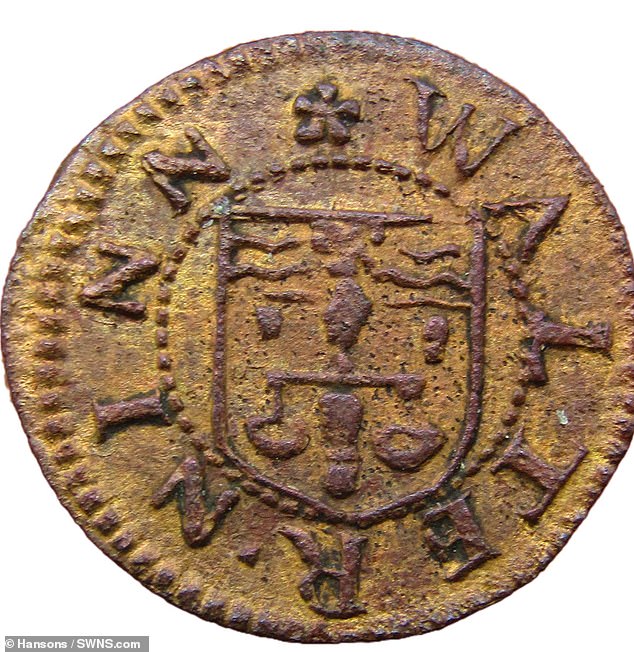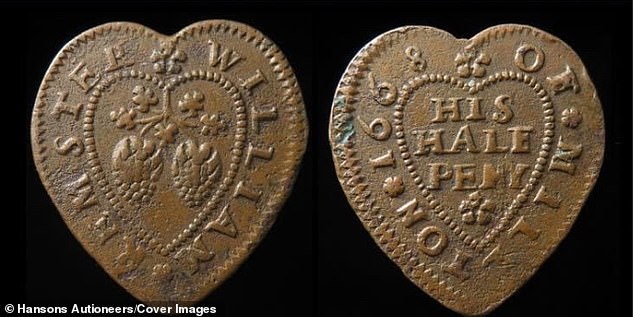Great Fire Sale of London: Collection of trading tokens - including ones minted in year of famous 1666 blaze - are set to fetch £20,000 at auction
- Roger Green, who is from Kent, spent 35 years collecting the tokens
- Were issued by traders instead of money due to a lack of available small change
- Many of the money tokens bear the names of the traders who once issued them
5 May 2021
A collection of battered 17th century trading tokens, including ones minted in the year of the Great Fire of London in 1666, could fetch £20,000 at auction.
Roger Green, who is from Kent, spent 35 years collecting the tokens on the muddy banks of the River Thames.
They were issued by traders instead of money due to a lack of available small change at the time.
Many of the money tokens bear the names of the traders who once issued them, including 'Walter' and 'William'.
The entire collection is expected to fetch between £15,000 and £20,000 when it is sold at Hansons Auctioneers, in Derbyshire, later this month.
A quarter of the 360 tokens in the collection display the year of the London fire, which six people and left around 100,000 people homeless.
Alan Smith, head of Hansons' Historica department, speculated that it was likely many of the tokens 'flew out of pockets and bags' amid people's panicked attempt to escape the flames.
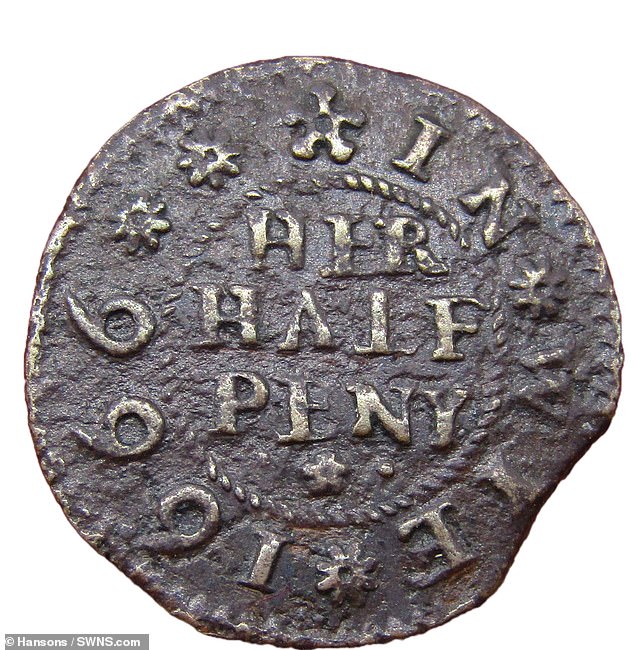
A collection of battered 17th Century trading tokens, including ones minted in the year of the Great Fire of London in 1666, could fetch £20,000 at auction. Pictured: This coin was issued by trader Marie Allen, from Wye in Kent
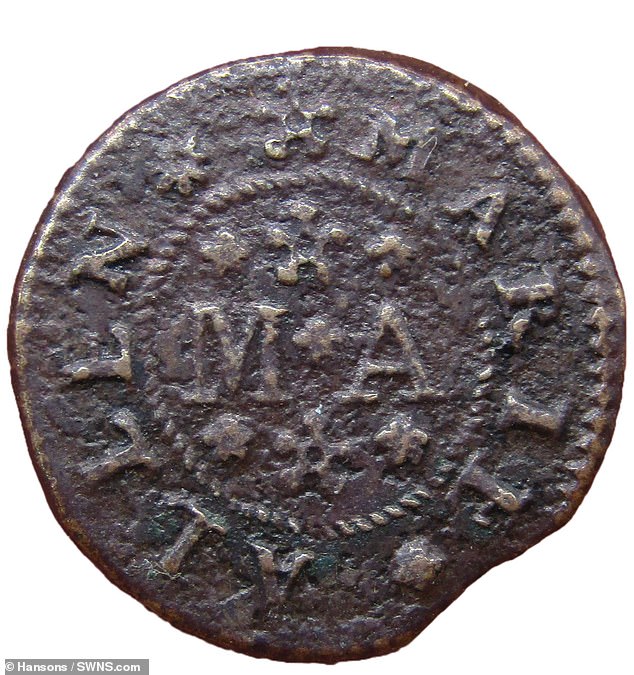
Many of the money tokens were found buried in the muddy banks of the River Thames after lying undiscovered for more than 300 years. Pictured: The other side of the token issued by Marie Allen
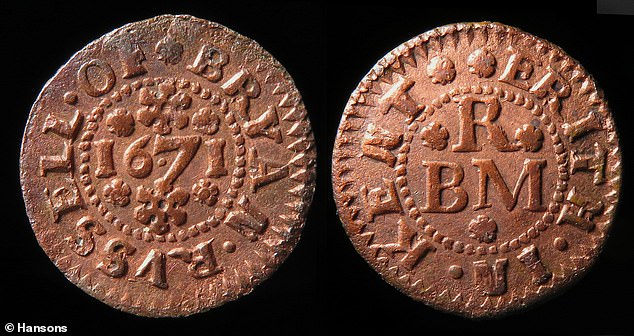
Mr Green said one of his most prized tokens is one from Erith, south-east London, which is only a mile from where he used to live. The coin is dated 1671
Mr Green said: 'I started collecting coins but gradually moved to tokens. I find them more interesting as they're personal to the people who issued and used them.
'I joined the Society of Thames Mudlarks and Antiquarians in 1985.
'River digging opened a whole new area and over the years I managed to find quite a few tokens, mostly from London and Southwark but also from other areas of the country.
'One of my most prized tokens is from Erith, an area of south-east London only a mile or so from where I used to live.
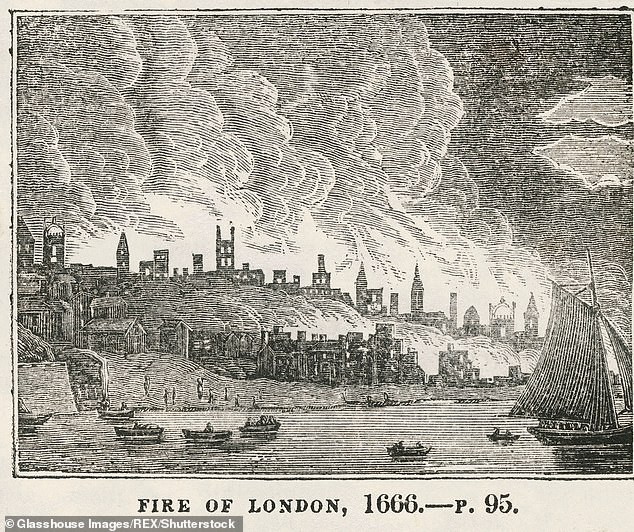
A quarter of the 360 tokens in the collection display the year of the London fire. Alan Smith, head of Hansons' Historica department, speculated that it was likely many of the tokens 'flew out of pockets and bags' amid people's panicked attempt to escape the flames

Roger Green, who is from Kent, spent 35 years collecting the tokens, which were issued by traders instead of money due to a lack of available small change at the time

